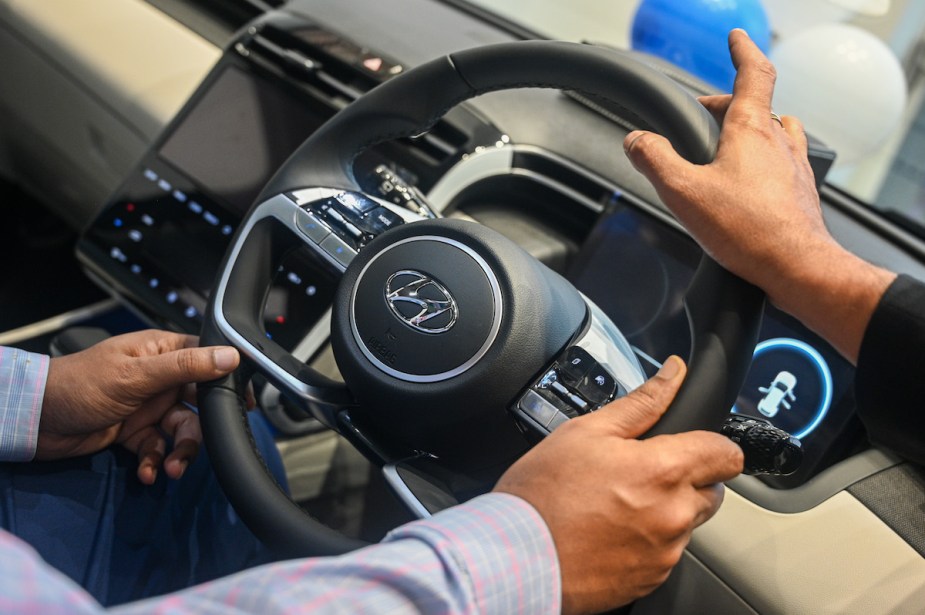
These 2 Reasons Could Cause a Power Steering Leak
A power steering leak is one of the most serious maintenance issues that can occur with your car. When it does happen, it is crucial to have it looked at and corrected as soon as possible to prevent further damage. Knowing the possible causes of a power steering leak is also vital.
The two possible causes of a power steering leak

For most beginner and intermediate car owners, recognizing a power steering leak from other leaks is a daunting task. Fortunately, you can tell whether you have a it if you notice any of the symptoms below. According to Access Auto Insurance, The first symptom is the presence of leaked fluid on your driveway. A power steering leak typically appears as a red or brown fluid leaking from an area toward the car’s front.
Other symptoms of a power steering leak include
- Stiff steering- If you have a leak, you will likely experience stiff steering, often because the power steering pump does not receive enough fluid, making it difficult to steer the car.
- Whining noise- Another symptom of a power steering leak is whining and grinding noises. This noise is due to friction resulting from a lack of lubrication.
- Ignition noise- In some cases, you may also hear an ignition noise when starting the car. A warning light on the dashboard may often accompany the noise.
If you experience any of these symptoms, it is essential to take your car to a mechanic as soon as possible and have it checked for a power steering leak. With that out of the way, the next most important thing to understand about a leak is the causes. There are generally two possible causes. Below is a brief overview of each.
1. Your car’s seals and o-rings lose form/mass due to age
As cars age, various things happen to the o-rings and seals that cause them to fail. First, the O-rings’ material losses form, hardens and turns brittle from the constant exposure to heat. Secondly, the O-ring’s constant exposure to heat leads to permanent compressed deformation, resulting in the loss of sealing force. This loss of form permanently limits sealability, especially during dynamic applications, which, in turn, leads to leakages.
Another significant problem that arises from an O-ring’s exposure to heat is plasticizer volatilization. Once the plasticizers become volatilized, the seals and O-ring shrink and cannot retain their sealability in the groove. In addition, oxidative cracking of the O-rings and seals can also occur, causing pits and cracks on the sealing surface that initiate the power steering fluid leakages.
2. The o-rings break into chunks due to mileage and circulate in the fluid
The other cause of a power steering leak is if the o-rings break up into chunks that circulate in the fluid due to mileage and age. High mileage often means more friction and heat, which causes the O-rings to break into chunks. These chunks can often clog up the system, causing pressure build-up and eventually leading to a failure of one or more seals. In some cases, this can also cause the pump to fail.
What are the ramifications of leaking power steering fluid?
Prevention is the best way to avoid a power steering leak. Proper maintenance, including regular inspections and fluid changes, can help prevent a leak before it becomes a problem. However, suppose you begin leaking power steering fluid. In that case, it is crucial to have your car checked by a mechanic as soon as possible because if left unchecked, it can result in serious problems, including the stiffening of the steering wheel. Therefore, making it difficult to steer the car and more likely to be involved in a car accident.


